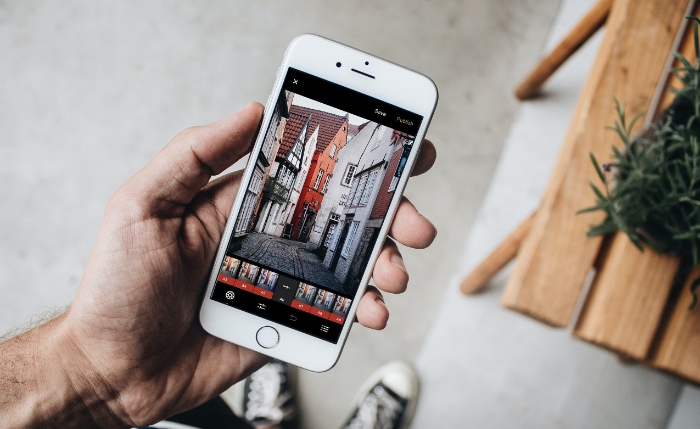JPG vs. PNG: Choose the Right Format for Every Image

Scrolling through your photo gallery or designing a website, you’ve almost certainly saved, uploaded, or shared images as JPG or PNG files. Each format sits at the heart of digital imagery, shaping how your photos appear, how quickly your websites load, and how graphics look on screen.
Yet, choosing between JPG and PNG isn’t just about preference; it’s about matching the right tool to your creative needs. With options that impact sharpness, transparency, and file size, making the right choice can save you time and ensure your images look flawless wherever they appear.
Core Technical Differences
Choosing the right image format often starts with grasping the unique technical features that set JPG and PNG apart. Each format has been designed with distinct goals in mind, affecting how images are stored, displayed, and manipulated.
Compression Methods
JPG images use lossy compression, which means some image data is discarded to create smaller file sizes. The advantage here is efficient storage and faster loading times, making JPGs ideal for sharing large quantities of photographs or images where minor quality loss is acceptable.
However, the trade-off is visible degradation, especially after repeated saves, since each compression pass sheds more detail.
PNG, on the other hand, utilizes lossless compression. All original image data remains intact during the saving process.
As a result, PNG files are typically larger, but they preserve details sharply and accurately. This becomes important for graphics that demand crisp edges, such as logos, illustrations, and designs where image quality cannot be sacrificed.
Transparency Support
One major technical distinction between JPG and PNG centers on transparency. JPG format does not support transparency at all, so backgrounds must be solid, often appearing as white or colored blocks behind an image.
This limitation rules out JPG for graphics that need to blend seamlessly into a variety of backgrounds.
PNG stands out by offering support for transparency through its alpha channel. The alpha channel can create varying degrees of opacity, allowing parts of an image to be fully transparent, partially see-through, or completely opaque.
Designers and web developers often rely on PNG for icons, overlays, and images where clean integration with varying backgrounds is essential. This feature alone can determine which format wins out for interface elements or branding graphics.
Color Depth and Complexity
Both JPG and PNG support 24-bit color, allowing them to display millions of colors and produce vibrant, lifelike images. JPG excels at storing photographic scenes smoothly thanks to this wide color range, making it a popular choice for images rich in gradients and subtle tones.
However, PNG goes a step further by supporting an 8-bit alpha channel, which adds 256 levels of transparency. This extra dimension enables smoother blending and higher-quality overlays, especially when images need to fade into backgrounds or interact with other visual elements in creative ways.
PNG’s color handling remains consistent, even after multiple edits and saves, whereas JPG may lose quality and show compression artifacts over time.
Quality vs. File Size Trade-offs

Balancing image quality with file size is an ongoing challenge for anyone working with digital media. Each format approaches this balance differently, influencing how images look and perform across different platforms.
The way JPG and PNG manage quality and storage efficiency often becomes a deciding factor in their selection for specific projects.
Impact of Lossy Compression
JPG relies on lossy compression to reduce file size, sacrificing some image data in the process. Initially, the loss may not be obvious, especially when the compression level is set to high quality.
However, each time a JPG file is edited and saved again, more data is discarded, gradually introducing visible artifacts such as blockiness, blurring, or color inconsistencies. Over time, repeated saving can leave images looking noticeably degraded, which becomes a concern for files that need to be updated or reused frequently.
For many uses, this trade-off is a fair price for dramatic reductions in file size, which help images load quickly and minimize storage needs.
Lossless Preservation in PNG
PNG takes an opposite approach by using lossless compression. Original image details remain unchanged during every save, allowing crisp edges, clean lines, and smooth gradients to persist no matter how many times the file is edited.
Text, logos, and graphics benefit most from this preservation. Even the subtlest color transitions remain intact, and there is no risk of accumulating unwanted artifacts.
While PNG files are generally larger, the confidence of perfect reproduction makes the format a favorite for designers, illustrators, and anyone who cannot afford visual compromise.
Balancing Speed and Clarity
Making a choice between JPG and PNG often comes down to the intended end use. When speed matters, such as on photo-heavy websites, social media feeds, or email attachments, JPG’s smaller file sizes help ensure quick uploads and smooth browsing.
Even with some quality loss, the overall user experience is often improved due to faster load times.
On the other hand, projects that demand visual accuracy, like print graphics, professional portfolios, or site elements requiring transparency, call for the uncompromising clarity of PNG. Maintaining sharpness and detail can outshine considerations of file size when the finished result needs to appear polished and professional.
Finding the right balance between efficiency and image fidelity depends on context, but knowing how each format handles compression makes the choice much clearer.
Ideal Use Cases for Each Format

Choosing the optimal image format is rarely about just technical specs. It often depends on the scenario and the end goals for your images.
Each format brings advantages that make it shine in specific applications, and knowing where JPG or PNG excels can save you time while ensuring top-notch results.
Ideal Applications for JPG
JPG is preferred for photographs, especially those meant for online sharing. Social media platforms, blogs, and image galleries often handle large numbers of images, so efficient storage and fast loading times are crucial.
JPG’s ability to compress high-color, detailed photographs into smaller file sizes is a major benefit. Most photos maintain their quality well enough for everyday use, while the reduced storage demands make life easier for both website owners and casual users uploading from a smartphone.
Online portfolios, travel diaries, event photos, and even email attachments all benefit from JPG’s balance of file size and realistic color reproduction.
Ideal Applications for PNG
PNG outshines JPG in areas where transparency and precision are essential. Graphics featuring logos, icons, and artwork with transparent or variable-opacity backgrounds look sharp and professional as PNGs.
Screenshots also benefit, since text and interface elements remain crisp and easy to read without the compression artifacts that plague JPG. Documents and presentations often contain charts, graphs, or graphics with lots of lines and lettering, which PNG preserves faithfully.
Any scenario that involves crisp lines, bold colors, or frequent editing favors PNG, as it keeps artifacts at bay and maintains original quality after multiple saves.
Hybrid Scenarios
Sometimes an image demands a middle ground between the detailed accuracy of PNG and the efficient storage of JPG. Infographics and complex visuals often contain a mix of photographs, text, and drawn elements.
These cases require balancing visual fidelity with reasonable file size. Designers may use a mix of formats within a project, saving photographs as high-quality JPGs and exporting graphics or overlays as PNGs.
For images that blend photos with transparent elements, such as product previews placed over colored backgrounds, careful format selection can make all the difference in maintaining a polished, seamless look.
Editing and Reusability Considerations

Efficient editing and long-term reusability are just as important as initial image quality. Artists, designers, and anyone who works with visuals need to think about how their chosen format will hold up throughout multiple edits, as well as how it will serve their archiving and publishing needs.
Multi-Save Degradation in JPG
JPG images lose quality each time they are modified and resaved. Compression artifacts tend to compound with every edit, causing gradual blurring, color loss, and the appearance of unwanted noise in fine details or text.
For photographers and designers who plan to refine an image over several sessions, JPG’s tendency to degrade can become a significant drawback. Original clarity and sharpness may never return once lost, so JPG works best for final, non-editable versions or situations where minor quality loss will go unnoticed.
PNG’s Editing Advantages
PNG, with its lossless compression, stands out as the preferred format for images that demand ongoing adjustments. Editing a PNG repeatedly leaves image fidelity untouched; sharp edges, vivid colors, and perfect gradients remain intact even after dozens of saves.
Designers enjoy confidence when making incremental changes, updating layers, or tweaking colors in graphics, knowing that every pixel remains true to the original. Frequent tweaking of interfaces, icons, or diagrams is much easier with PNG, since each version can serve as a pristine starting point for future edits.
Archival Best Practices
Long-term archiving and project management benefit from a thoughtful combination of formats. Many professionals save their design source files in PNG to maintain maximum quality throughout the creative process, especially for assets containing transparency or requiring frequent revisions.
Once the work is finalized, a JPG version can be exported for fast loading and easy sharing, especially where file size limits exist. Adopting PNG for preservation and JPG for distribution ensures both versatility and reliability, keeping files flexible for future edits while supporting practical sharing and publication needs.
Optimization Strategies for Specific Needs

Selecting the right image format often comes down to the unique demands of the project and the platform. Efficiency, visual quality, and compatibility each factor into how images are prepared and delivered.
JPG and PNG offer different strengths for web, print, and various online platforms, so aligning your strategy with your end goals helps ensure the best results.
Web Performance
Online experiences rely heavily on quick loading times and sharp visuals. JPG is often the preferred choice for web photography, banners, and backgrounds due to its compressed file sizes, which make pages load faster and save bandwidth.
This efficiency directly impacts bounce rates and user satisfaction, especially on mobile devices where speed matters most.
For crisp UI elements, icons, and images requiring transparency, PNG is hard to beat. Navigation buttons, logos, and overlays remain clear and professional-looking without the risk of compression artifacts.
Websites often combine both formats, using JPG for photographic images and PNG for graphics or screenshots, to achieve an ideal balance between speed and clarity.
Print Media Requirements
Print projects raise the bar for image quality and detail. PNG’s lossless nature ensures that every pixel remains sharp and colors reproduce faithfully, especially in graphics, diagrams, and logos slated for professional printing.
JPG can still serve well for photographs in print, but any visible compression artifacts or resolution issues may become prominent on high-quality paper and at large sizes.
Designers often use PNG throughout the editing and proofing process, reserving JPG for final photographic files only if the quality threshold remains acceptable. For brochures, packaging, and any material involving text overlays or intricate graphics, PNG provides unmatched reliability and clarity.
Platform-Specific Guidelines
The optimal format may shift depending on where images will appear. On social media, JPG reigns for photos and event images, given site-imposed file size and resolution limits.
Photos intended for sharing, profile pictures, and visual storytelling on platforms like Instagram or Facebook are typically exported as JPG to speed up upload times and reduce data usage.
E-commerce platforms and online stores, on the other hand, gain significant benefits from PNG. Product images featuring transparent backgrounds, detailed graphics, or text labels need the crispness and flexibility that PNG provides.
Customers enjoy a seamless shopping experience, with product images that appear sharp and blend smoothly into different backgrounds. Each scenario benefits from playing to the specific strengths of JPG or PNG, helping brands and individuals achieve their desired impact while meeting platform requirements.
Conclusion
Choosing between JPG and PNG boils down to distinct advantages each format brings to the table. JPG excels with its lossy compression, making photographs and social media posts quick to load and efficient to store, though at the expense of some image fidelity and without support for transparency.
PNG, relying on lossless compression, preserves perfect detail, supports transparent backgrounds, and remains resilient through endless edits, making it the favorite for crisp graphics, logos, and any visual that demands sharpness.
Project needs should guide your decision. Seeking speed and small file sizes for online galleries or busy websites? JPG delivers. Requiring pristine quality, transparency, or frequent adjustments for your graphics and branding? PNG stands out.
Align your image format with your goals, and your visuals will look their best, perform efficiently, and suit the demands of any medium.


